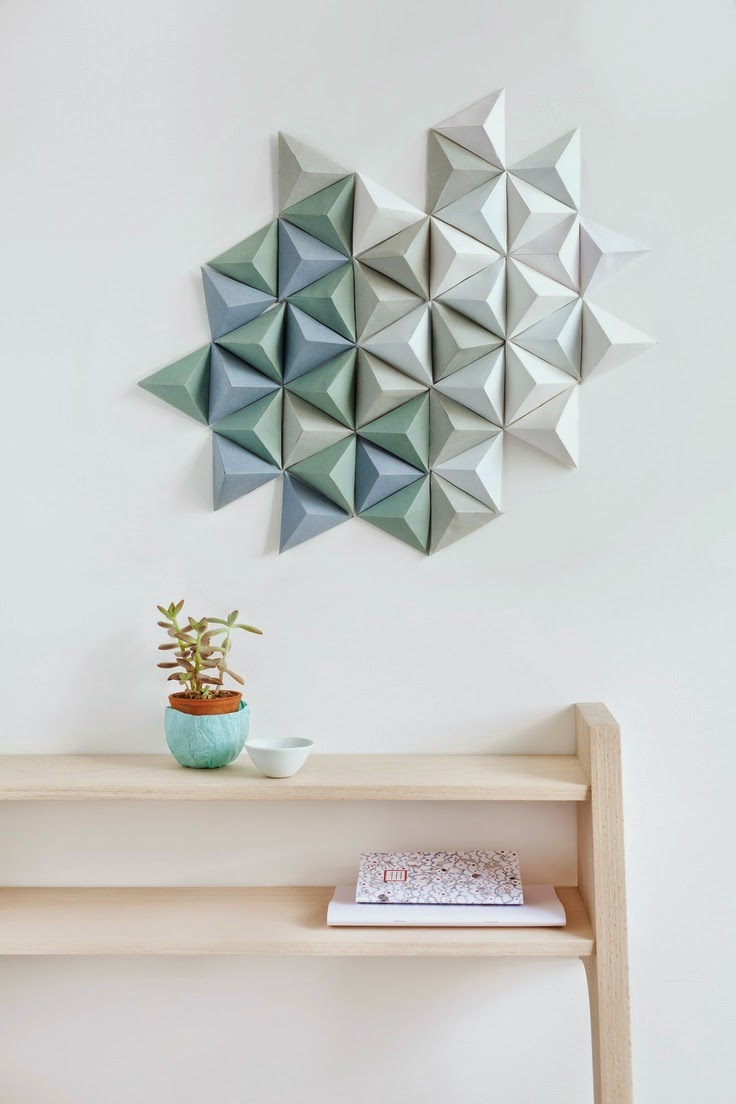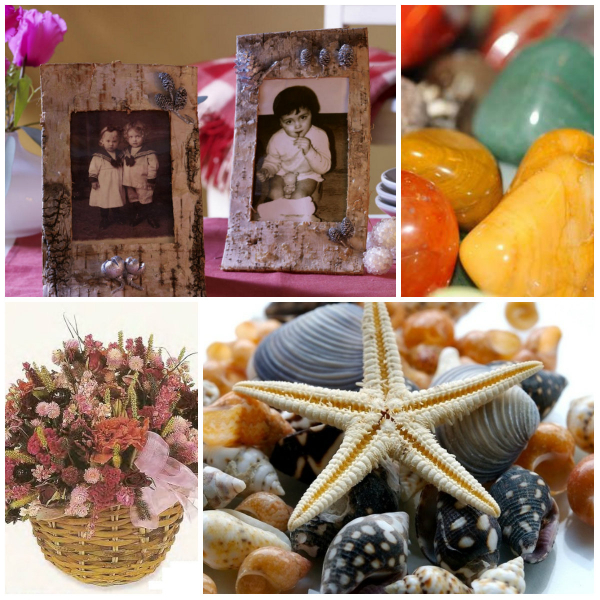Aquarium plant cabbage. Pistia or Water Cabbage
Pistist
Add to bookmarks:
A representative of the Aroidae family (Araceae). Scripture is a monotypic genus, established by Linnaeus in 1753. The name of the genus is translated from ancient Greek as “aquatic”.
The distribution area for pisti or Water lettuce is water in the subtropical and tropical regions of Africa.
A plant with very long, bluish-black, branched roots, usually floating on the surface of the water in the coastal zone, and rooting in the ground when the water level decreases.
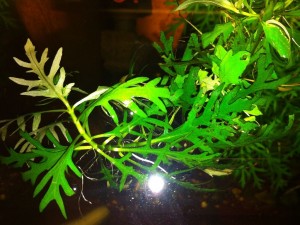
The leaves are collected in a socket, sessile, in most cases erect. The leaf blade is obovate to scapular, slightly notched at the apex, up to 25 cm long and 12 cm wide, but usually smaller, silky-pubescent, light green in color. The underside of the plate with 11 strongly protruding veins. Forms with spongy thickened leaf blades are also known.
The inflorescence is inconspicuous, on a short peduncle. The cover sheet is usually about 10 mm long, narrowed, pubescent on the outside, ear coars shorter than the bedspread. The flower is naked. There is only 1 female flower, followed by (2) 5-8 ring-shaped male flowers. Each sinandria of 2 fused stamens. The fruit is a multi-seeded berry with a persistent pestle. Seeds are cylindrical.
This is a luxurious floating plant for home gardens. But the pistol as a floating plant can be kept in the aquarium, only it becomes much smaller. It grows best in nitrate water and can then form rosettes up to 80 (!) Cm in diameter. Plants develop equally well in soft and hard water and cost little to moderate light. However, warmth and intense lighting contribute to the formation of powerful instances. Optimum temperature 22-30 ° C. Pistia, thanks to productive propagation by offspring, quickly forms a floating carpet, which must be regularly thinned out. Inflorescences form regularly. Germination of seeds is possible (seeds should be kept wet). When kept in a pond, remember that the plant is not frost-resistant. Greenhouse specimens in winter slow down growth because they lack light.

Location: solar reservoirs 10-40 cm deep. Pistia is thermophilic and very photophilous. The main requirement for the normal development of plants is bright light, better sunny, but artificial can be. Important for the plant and a fairly high humidity.
Care:winters in a bright pond of a winter garden or an aquarium at a temperature of at least 16 ° C. At the end of August and the beginning of September, small sockets must be transferred to a room aquarium for wintering.
In winter, the pistol must be kept in bright light, the aquarium must be covered with glass to maintain sufficient air humidity. Optimal time lighting pistols - 12 hours a day. Often dies from a lack of light and nutrition. Suffers from snails. Prefers fairly soft water. In the absence of an aquarium, plants in winter period, can be stored in a humid chamber on a pad of marsh moss at a temperature of 12-14 ° C.
Reproduction: It multiplies itself and constantly gives a mustache, at the ends of which new sockets are formed. Divide the plant in the summer.
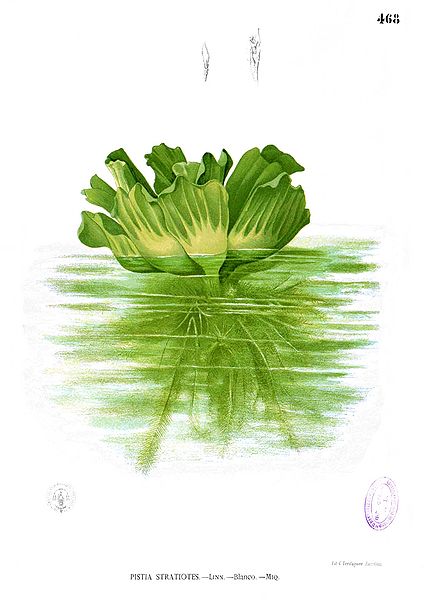
This plant is commonly called water cabbage. However, tastes have nothing to do with it. Ceratopteris can not be eaten, but it is possible to keep it in an aquarium.
In nature, this marsh plant is found in a large territory of tropical South America (Colombia, Paraguay, Peru, Brazil, northern Argentina) and in some parts of Central America (for example, in Guatemala and Honduras).
Some small populations are found in the southern states of India, as well as in the countries of the Indochina peninsula (Vietnam, for example).
This type of fern prefers to grow in slowly flowing rivers or in stagnant water of bogs rich in organic matter.
Taxonomy
According to the scientific classification, ceratopteris (Ceratopteris pteridoides in Latin) belongs to the vast family of horny (Ceratopteridaceae). In some sources - Ceratopteris cornuta. The botanists have studied the species Ceratopteris pteridoides for a long time and very well.
Appearance and features
 The wing-shaped fern is a rather large tropical plant that loves warmth and can exist in muddy, saturated with organic water. It can firmly root in wet soil, but can be on the surface without rooting.
The wing-shaped fern is a rather large tropical plant that loves warmth and can exist in muddy, saturated with organic water. It can firmly root in wet soil, but can be on the surface without rooting.
The roots are thin, highly branched, gray. If the vegetation floats freely in water, more precisely on its surface, then the drooping root is very similar to a tangled beard.
Instances of this type of aquatic flora in natural conditions are quite impressive in size:
- the length of the thick stem is from 23 to 30 cm,
- the length of the petioles of the leaves can reach 18 cm,
- and thickness - up to 2 mm.
Both the stem and petioles have a spongy structure. The sheet plate itself is also large: up to 18 cm long and 24 cm wide, dissected in shape.
Light green leaves are fleshy, veined, fragile, in structure they really resemble cabbage leaves.
The plant has both sterile and fertile (producing shoots) leaves, and they can be found in both ground and floating specimens.
There are so-called sporangia wrapped down at the edges of each fertile leaf. These are special kidneys in the form of small sacs that contain 32 spores. From them grow new shoots of fern.
It should be noted that such a breeding mechanism "works" only in natural conditions. There have been no cases of natural reproduction of ceratopteris in aquariums.
On the surface of the water, the leaves are folded into a compact “outlet”, which resembles in its own way appearance a small head of cabbage. Hence the name " water cabbage».
Features of keeping in aquariums
 Aquarium. Since this type of ferns has a fairly solid size, the aquarium for its optimal content is also not small, with a capacity of 50 l or more. True, in the case of aquarium maintenance, the growth (and, accordingly, size) of the plant will be limited by the scope of the existing artificial reservoir.
Aquarium. Since this type of ferns has a fairly solid size, the aquarium for its optimal content is also not small, with a capacity of 50 l or more. True, in the case of aquarium maintenance, the growth (and, accordingly, size) of the plant will be limited by the scope of the existing artificial reservoir.
Water design. with the help of ceratopteris, it wins if it is planted in the ground in the background or near the side walls.
Often, water cabbage just floats on the surface of the water, being the main element for the construction of shading zones, which are very attractive for some types of ornamental fish.
In the thickets of water cabbage, especially in its "beard" fry are very fond of hiding.
Aquaparameters. The water in the aquarium tank must be inactive, which is achieved by appropriate adjustment of the compressor and filter pump. The soil should be slightly silted, rich in nutritious organic matter, which serves as food for plant development.
A tropical aquarium containing Ceratopteris pteridoides should have the following water parameters:
- acid-base balance of 6.5-7.5 units (near the neutral mark);
- temperature in the range from +22 to +28 degrees Celsius;
- stiffness no more than 15 degrees.
Lighting is not too important a maintenance factor, but a daylight hours of at least 6 hours should be ensured. Experts strongly recommend using in fixtures only to prevent burning large leaves fern.
Experts say that when these conditions are rejected, the plant gradually degrades and dies.

But in this case, there is a danger that the leaves of fern will cover the entire water surface of a small domestic reservoir.
- The aquarium where the ceratopteris is located should be covered with a lid.
Of course, the plant will not jump out, like some types of ornamental fish, but this is necessary in order to prevent condensation on the surface large leaves. This can damage the plant.
- It also does not like frequent transfers
If you took a fern from the ground and left it to swim on the surface of the aquarium, then it’s not at all a fact that when the bush is re-planted in the aquarium soil, it will normally take root.
In general, experts say that Ceratopteris pteridoides is a complex plant in terms of its content.
The wing-shaped fern is appropriate in a medium-sized aquarium (50-100 liters). Let him go “swimming”, and the decorative qualities of your home reservoir will only increase from this.
Wing-shaped fern or, as it is also called, Ceratopteris (Ceratopteris pteridoides) or Water cabbage – horny family (Ceratopteridaceae).
Habitat
Wing-shaped fern grows throughout the South American continent, as well as in Central America. Under natural conditions, it can be found in bodies of water with slowly flowing or standing water.
Appearance
Height Pterygoid fern in nature is approximately 30 cm, at home it will be limited in size. The broad light green leaves are finger-shaped. The second name is “water cabbage”. The wing-shaped fern was obtained due to the fact that its leaves form a dense rosette resembling a head of cabbage. The fern leaf plate is large enough; it, like cuttings, is very fragile and brittle. has a fibrous root system - its roots intertwine, forming a thick "beard" in which fry take refuge and spawning.
In the aquarium, this fern can take root in the ground, or swim freely on the surface of the water. The first option looks spectacularly planted along the rear and side walls of the aquarium, and the second - in the form of a beautiful rosette of translucent leaves on the water surface.
The pterygoid fern is a wonderful natural filter, absorbing carbon dioxide and organic matter and actively releasing oxygen. In addition, floating on the surface, it perfectly diffuses the light, creating a comfortable environment for the inhabitants of the aquarium.
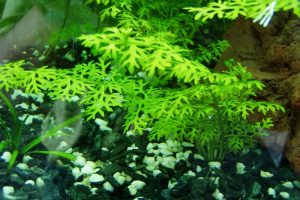
Conditions of detention
Contain Wing-shaped fern difficult enough, so few decide to settle it in their underwater garden. The aquarium where this fern grows cannot be closed because the condensate formed on the leaves is harmful to the plant. Also, you can not often bother him, so it should be inactive. Recommended temperature - 22-28 ° С, water - neutral, with hardness up to 15 * and a large amount organic matter. This type of ferns needs a lot of light, so the aquarium needs to provide intense lighting. If the conditions listed above are not maintained for the plant, it begins to lose color and slowly dies.
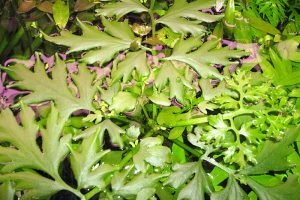

Pistia (Pistia) or Water Cabbage - Famous aquarium plant Aroid families. Pistia is well known to aquarists. It is also called "water rose", "water salad". This is a thermophilic tropical plant native to freshwater in Africa.
The leaves of the pistol are collected in a socket, sessile, velvety, light green in color. The tender rosettes of its leaves floating on the surface of the water are unusually beautiful. Below, under the leaves there are long branched roots of green or almost black color up to 25-30 cm long. The whole plant floats on the surface of the water in the coastal zone, and when the water level drops, it easily roots in the ground.
Pistia is considered a moody plant. She can't stand cold waterlives only in a warm body of water. For the full growth of Water Cabbage, you need a lot of light, and a sufficiently nutrient medium is also required. Under favorable conditions, the rosette of leaves can reach a height of 15 cm and a diameter of up to 40 cm.
Flowering is not of interest, even if it produces an inconspicuous, on a short peduncle inflorescence. The leaf rosette itself may look like a green rose or a lush bush of lettuce with corrugated leaves, for which the plant is valued.
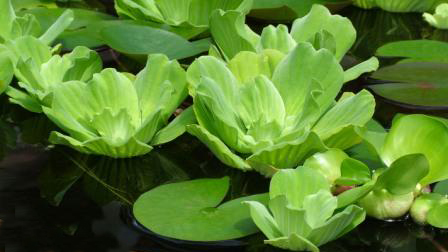
In aquariums, the pistol does not grow large, its sockets are more often 5-7cm. Aquarists know that for successful cultivation water cabbage in winter requires a lot of light, otherwise it dries and disappears.
Surprisingly, the pistol transferred to, grows well, its outlets become large, many children appear. This is just a luxurious floating plant for home gardens!
Of course, tropical water cabbage cannot hibernate in the pond; in winter it must be stored in an aquarium or a jar. If the house has an aquarium and small pistons grow in it, then planting material for garden pond will always be in abundance.
Using Pistols in Garden Ponds
The pistol looks best in small ponds where you can clearly see its exotic beauty. In water-filled bowls, in small marshes in combination with tall shoots of cyperus or Zantedes, water cabbage will look very impressive. In shallow water, the pistol can multiply rapidly, forming a floating carpet by the end of summer.
Tips for growing pistons (water cabbage, water salad)
Location. As for, for shallow-loving pistols solar shallow ones are suitable. The water in them should be well warmed up in the sun. The basic requirements for the normal development of water cabbage are heat and bright light.
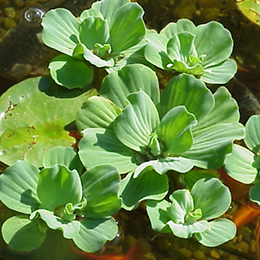
Temperature. Pistons are transferred to the pond only when the water warms up to a temperature of 10-15 ° C. The air temperature may be slightly lower. If cooling is expected, then warm water can be added to the pond.
Food. Water cabbage requires good nutrition. It grows best in water, where there are a lot of nitrates. For full development, the presence of fertile soil at the bottom of the reservoir is required, and even better if the roots reach the silt at the bottom of the pond.
Wintering. Water cabbage hibernates in an aquarium at a temperature of at least 16 ° C. In early September, they take only small outlets from the pond, they are thoroughly washed so as not to bring pests into the aquarium. It is best to place the plants in a separate aquarium. Pistia needs high humidity air, so the aquarium is covered with glass. Necessarily requires good lighting, preferably daylight hours 10-12 hours a day.
Floating plants not only create an attractive design, but also protect the water column from the penetration of numerous bacteria. Plants floating on the surface of the water do not require any special care.
The right choice of floating plants for the pond will help this material, which contains descriptions and photos of some species. All aquatic floating plants are unstable to low temperatures, and this should be taken into account when growing them.
These are useful and decorative plants just scatter on the surface of the water. Under suitable conditions, they grow greatly, they must be limited by catching with a net or a rake.
Eichornia plant or water hyacinth (E-ichornia crassipes) and its photo
A very attractive floating plant Eichornia - water hyacinth, or the green plague. We eichhornia water hyacinth, of course, will not become a "green plague", in winter in open waters it will inevitably die. Before the first frosts, it is brought into the room and kept in a vessel with water or in an aquarium at a temperature of 15-22 ° C and additional exposure. A well-developed specimen is placed in a ring float so that the roots are immersed in water and the leaves do not touch the water and do not rot. At a temperature of 24-26 ° C and normal aquarium lighting, water hyacinth successfully winters. You can try another option. winter storage - planting in wet sand.
The plant transferred to the heated water of the reservoir in June will begin to multiply and delight emerald greenery and beautiful inflorescences.
Similar to orchids, pale lilac flowers appear at the end of summer, they sit on dense peduncles and are extremely decorative, in the cool summer Eichhornia does not bloom, for flowering it needs a water temperature of at least 22 ° C. The height of the flowers above the surface of the water is 30 cm, the flowering time is August - September.
Look at the Eichornia plant in the photo, which shows the options for landscaping ponds:
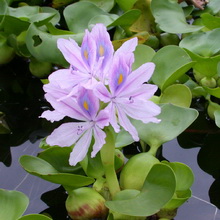 |
 |
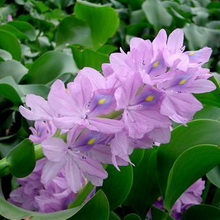 |
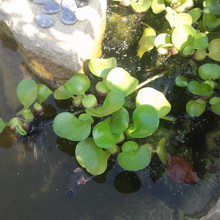 |
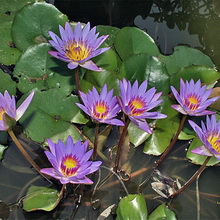 |
Pistia floating plant (Pistia) in the pond and her photo
To residents middle strip floating piston is known as an aquarium plant. Rosettes of its leaves, floating on the surface of the water, are so delicate and beautiful that they are called “water rose”, “velvet rose”, “water salad”, and also “water cabbage”. The pistia plant floating on the surface of the water does not survive in the cool summer and quickly dies during frosts. For full growth, you need a lot of heat and nutrition.
The spongy, thickened, folded leaves of the pistol are collected in a rosette and covered with dense white pubescence, under favorable conditions, it reaches a height of 15 cm and a diameter of 25-40 cm. On its underside are branched, floating in the water column, roots up to 25-30 cm long. being a wonderful natural filter. Pistia is thermophilic and very photophilous, prefers to grow in sunny ponds 10-40 cm deep. Its outlets are placed in an open pond when the water warms up to 10-15 ° C. In warm summer, the plant will grow beautifully, and acquire more dense and bright pubescence. For the full development of the piston in the pond, contact of the roots with the ground is necessary, or at least the presence of fertile soil at the bottom. In late August - early September, young sockets must be transferred to a well-lit indoor aquarium for wintering at a temperature of at least 16 ° C or stored in a container with wet moss at 5-12 ° C.
Look at some photos of the piston, which show the various stages of plant development:
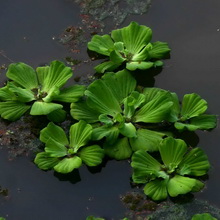 |
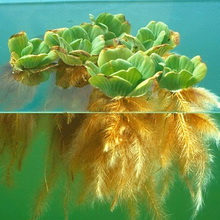 |
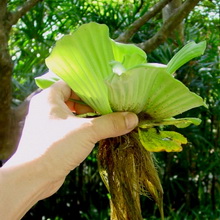 |
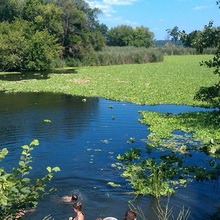 |
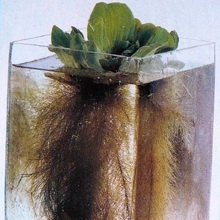 |
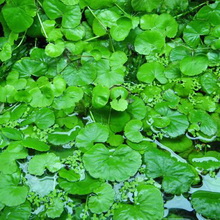 |

